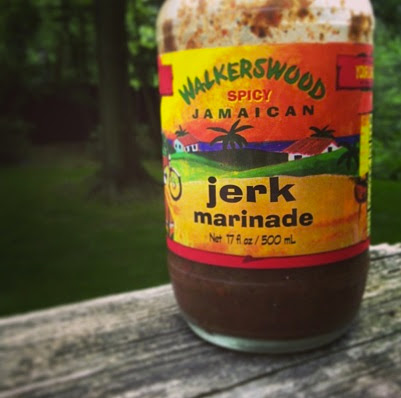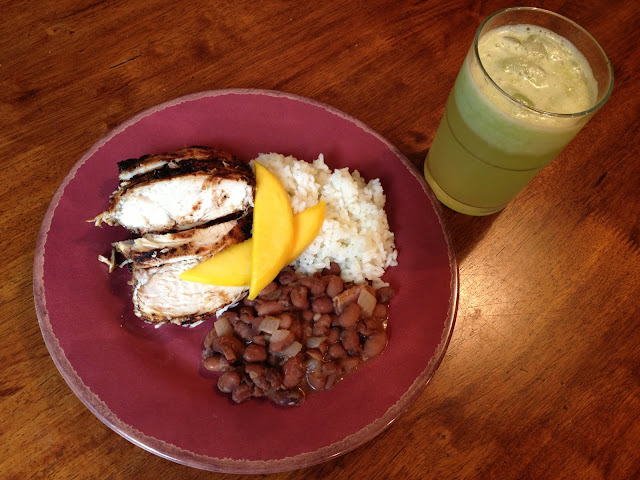A staple of Jamaican barbecue, when I first sampled jerk chicken in the U.S. Virgin Islands, I expected a combination of tropical flavors like pineapple and coconut with hints of teriyaki. Instead, jerk seasoning tastes more like a collision of Christmas with undercurrents of Mexican and Cuban cooking and a blast of heat.
Most jerk seasoning centers around a few key ingredients: Scotch bonnet peppers, allspice, and thyme. I discovered that one of the quintessential jerk sauces, if you’re going to buy it by the bottle, come from Walkerswood, which is manufactured right on the islands.

The heat from the jerk seasoning comes straight from the Scotch bonnet peppers, which dwarf the spiciness of jalapeno peppers and come much closer to that of their tongue-numbing cousin, the habanero. Now if you don’t feel at least a tickle in your throat when eating jerk chicken, it’s not Jamaican jerk. But the heat tends to build slowly at the back of your throat. I found that it took a few bites before the full heat captured my attention and my nose began to sweat. Often, jerk is served with rice, corn, beans, or some other basic side that can temper the heat from the peppers. I like to serve mine with fresh-squeezed lime juice mixed with whatever fruit I happen to have on hand, like kiwi or mango.
Just how jerk came to have its distinctive name is unclear. Some of the most common theories revolve around the Spanish name (courtesy of Peru) for dried meat, “Charqui.” It may be that the name “jerk” emerged over the centuries from charqui, which is also the derivative of “jerky,” as in beef jerky. Still another theory holds that the name began from the cooking technique of “jerking” the meat while it’s cooking, or poking holes in it to add seasoning.
Beyond the name, the origins of the seasoning combination are murky at best, too. Most sources credit the Arawak Indians, who came to the Jamaican islands from South America thousands of years ago, as the people who first blended the flavors that became synonymous with jerk seasoning. With the arrival of the Spanish in 1492, the Arawak Indians began to decline, many being stricken with disease and others enslaved by their conquerors. Later, Africans who are brought to the islands as slaves adopted the cooking techniques and seasonings of the Arawak and put their own spin on the dish.
Today, jerk seasoning is a specialty throughout the Caribbean. But you don’t have to be beachside to make jerk chicken (although, I must say it tastes even better when the ocean is nearby). To make jerk chicken at home, I’d suggest purchasing Walkerswood marinade (available at specialty grocers and through Amazon). I marinate 6 full boneless, skinless chicken breasts in half of a 17-ounce bottle at least overnight—usually I aim for a full 48 hours. Cook on a hot grill, basting it with pineapple juice as it cooks. I served our jerk chicken with a side of homemade black beans, plain rice, and fresh mango slices. Now if only I could import the sandy beaches…

Note: The jerk marinade works for both chicken and pork. YUM!
Kristen J. Gough is the Global Cuisines & Kids Editor for Wandering Educators.
Photos courtesy and copyright Kristen J. Gough
